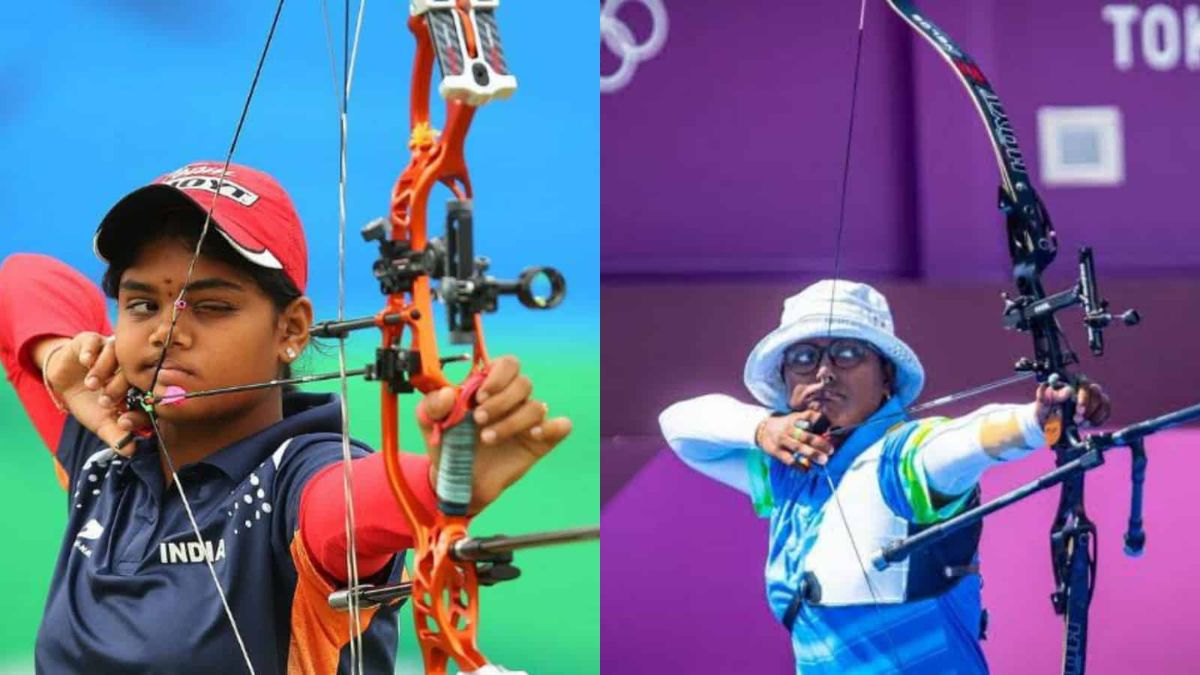
New Delhi: Another Olympics and yet again the same glaring defects of Indian archers are exposed in front of the world. The same old debates continue to grip the Indian archers, that when it comes to Compound, the Indian Archers are at the top of their games with promising performances in the Asian Games over the years.
However, when it comes to recurve, the Indian archers have faltered time and again in the Olympics. This time was no different with the Men’s team conceding defeat to Türkiye in the quarterfinals (2-4) while the Women’s team was routed by the Dutch team (6-0) in the same stage. So why a stark difference in the results of the two formats?
To understand this dichotomy that the Indian team faces, the working mechanism of both bows- Recurve and Compound needs to be understood.
Recurve vs Compound- What is the difference?
Recurve Bow
The biggest difference between a recurve and a compound bow is the type of bow used in both competitions. In a recurve bow, the ends of the bow at the upper part and the lower part curve away from the archers after curving inwards. Interestingly, the word ‘recurve’ is derived from this peculiar curvature of the bow.
In a recurve bow, the archers need their muscle strength as well as a lot of skills for aiming through the pin/window. Moreover, archers need to shoot the arrows manually by relaxing their fingers. Naturally, the timing and the wind speed along with the drift play a major role.
Compound Bow
Compound Bow, on the other hand, comes retrofitted with a lot of add-ons like pulleys, magnifying glasses and cables according to the preference of the archers. Naturally, archers are at ease when it comes to compound competitions. Compound bows were made popular in the United States of America and came into use during the 1960s.
In a compound bow, the archers have a switch release for the bows, helping them to ride over the wind drift that is there in every Archery tournament. On the other hand, the pulley system at the top ends of the bow allows the muscles of the arm to be relaxed. Naturally, archers can hold on to the bows for a longer time without fatigue in their muscles.
Furthermore, the use of magnifying glasses in the bows rather than the pin/window helps the archers in aiming at the target. The downside of the magnifying glass is that the weight of the bow becomes heavier. But it enhances the art of aiming multiple times.
Lastly, the distance at which the archers have to shoot in the compound events is also less when compared with recurve. While a distance of 50m is the standard distance for Compound archery, the Recurve archers have to cover a distance of 70m thereby making the competition a bit more difficult than the compound.
Indian Archery at Trouble?
So after analysing the mechanics of the two bows, is the Indian archery at trouble? Well, trouble won’t be the right terminology. Indian archers look more ‘comfortable’ in the Compound tournaments rather than the Recurve tournaments. The same Indian archery which is chastised today won a remarkable 9 medals last year during the Asian Games held in Hangzhou.
However, out of those 9 medals, 7 came from compound competitions while the recurve team managed to win a bronze and silver. Therefore, the main point of concern is that Indian archery is thriving in Compound more than the Recurve which should have been the other way around.
Nevertheless, Indian fans should not be disheartened as Indian archers Ankita Bhakat, Bhajan Kaur and Dhiraj Bommadevara are still on the medal hunt as they begin their Round of 32 quest today.




